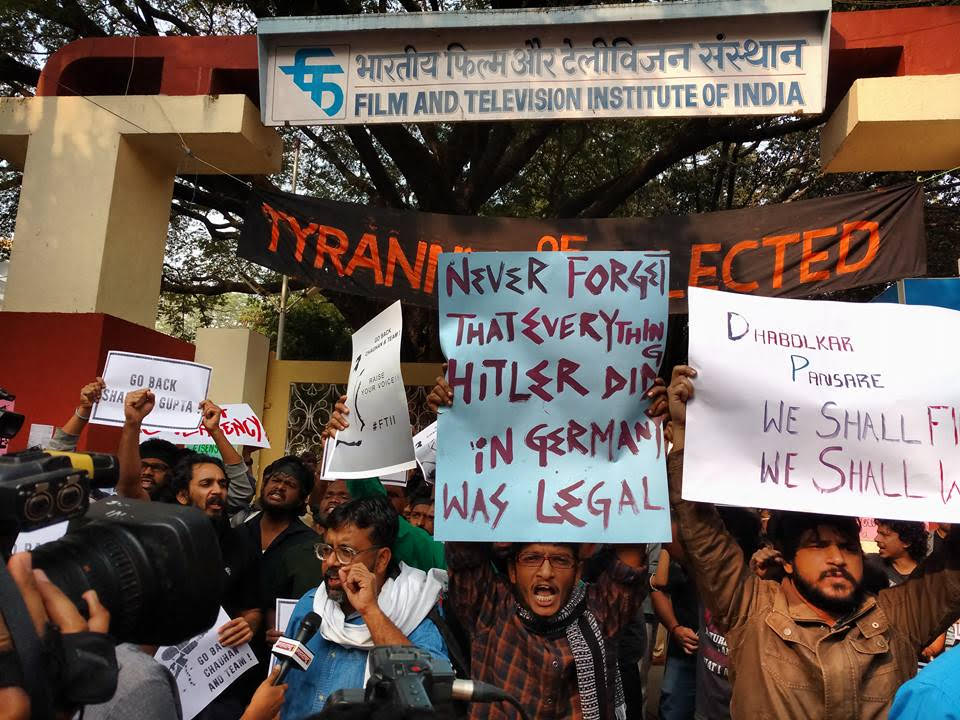India Registers Low ‘Academic Freedom Index’ Score in New International Report
A new report proposes a score for each country to help determine the level of academic freedom its universities and academic centres really enjoy.
India has a low score in a new global index of academic freedom, a performance that mirrors its poor ranking on global indices of media freedom and is likely to heighten concerns about the Modi government’s attitude towards constitutionally protected liberties.
The index proposes a score for each country to help determine the level of academic freedom its universities and academic centres really enjoy, and which the researchers behind the idea say could be used to understand a university’s attractiveness in addition to its infrastructure, research output, etc.
Specifically, the index and accompanying report try to quantify the freedom of university scholars to debate politically and culturally controversial topics without fearing for their safety or studies, and without any external influence on the institutions’ affairs, based on a combination of factual data and the assessments of 1,800 academicians worldwide.
The authors, affiliated with the Global Public Policy Institute, the Friedrich-Alexander-Universität (FAU) Erlangen-Nürnberg, the Scholars At Risk Network and the V-Dem Project at the University of Gothenburg, have thus prepared what they call an academic freedom index (AFI). The index has a maximum value of 1.
According to this analysis, India has an AFI of 0.352, comparable to the scores of Saudi Arabia and Libya. Curiously, countries that scored higher than India include Pakistan (0.554), Brazil (0.466), Ukraine (0.422), Somalia (0.436) and Malaysia (0.582). Uruguay and Portugal top the list with scores of 0.971 each, followed closely by Latvia and Germany. At the bottom are North Korea (0.011), Eritrea (0.015), Bahrain (0.039) and Iran (0.116).
India is also one of a handful of countries whose AFI dipped by at least 0.1 points in the five years until 2019. But the authors advise caution: “While there is evidence of a deteriorating condition for academics in both [Brazil and India], the extent of the AFI score’s decline seems somewhat disproportional in comparison to earlier periods in the countries’ history, as well as in comparison to other countries over the same period.”
Also read: ‘Terrorism’ Charge a Lesson for Jamia Students that Democratic Protest Carries Heavy Cost
Even so, India’s relative position in the rankings is not entirely surprising, and seems to be broadly reflective of state interference with institutional autonomy. Katrin Kinzelbach, a professor of political science at FAU, who conceived the AFI and led the report’s creation, told The Wire that their enterprise intends to capture the level of interference agnostic of its source. But Indian scholars have complained of state interference the most in numerous anecdotal accounts captured in the media in recent years, e.g. canceled seminars and talks, politically biased appointments, filing of criminal cases against student leaders for political speech, books withdrawn from course curricula, etc.
In the last six years, encompassing a little more than one term of Narendra Modi as the prime minister of India, the country has seen many protests by – and incidents of physical violence against – students and academics. One of the first such protests happened at the Film and Television Institute of India, Pune, when students protested the government’s attempts to interfere with the institute’s management, curricula and even cultural events on campus.
That was in June 2015. Since then, numerous universities around the country, most notably Jawaharlal Nehru University (JNU) in the national capital, have had to contend with more and more political interference, some of it prompted by agitations led by the ruling party’s student wing, the Akhil Bharatiya Vidyarthi Parishad, or else pushed directly by the party through the education ministry.
The AFI has eight components. Three are based on factual data and the remaining five are ‘expert-coded’: they’re based on the 1,810 scholars’ assessments “integrated in a Bayesian measurement model”. The components are:
1. Freedom to research and teach
2. Freedom of academic exchange and dissemination
3. Institutional autonomy
4. Campus integrity
5. Freedom of academic and cultural expression
6. Constitutional protection of academic freedom
7. International legal commitment to academic freedom under the the International Covenant on Economic, Social and Cultural Rights
8. Existence of universities
The answers to questions pertaining to the first five considerations is a degree. For example, the options for the first question are ‘completely restricted’, ‘severely restricted’, ‘moderately restricted, ‘mostly free’ and ‘fully free’.
A common issue with such responses is that the calculations involving the answers will assume the differences between successive options are equal, but in reality they’re often not.
Kinzelbach acknowledged this concern to The Wire – but also said she doesn’t think “there is a better alternative for an index of this kind.”
In addition, she said this is also why she and her colleagues had published an index, not a ‘ranking’: “precisely because rankings wrongly suggest equidistance between ranks. In our report, we also suggest comparing countries’ academic freedom performance in five broad bands or status groups.” As a result, Kinzelbach said, “I don’t think that an ordinal scale with a slightly different wording would have led to vastly different assessments.”
Also read: Who’s Afraid of the University?
Next, each indicator-year datapoint for a country is included in the dataset only if at least three country-experts answer the operative question. Each country-expert is chosen after filling a form in which they are required to list at least two professional references and “publications in support of their expertise”.
According to Atanu Biswas, a professor at the Indian Statistical Institute, Kolkata, the report’s accompanying ‘codebook’ doesn’t have many details about the technique used to “integrate” the assessments, called “Bayesian factor analysis”. Biswas only said it’s used “widely in psychometry and educational statistics”.
Madhusudhan Raman, a postdoctoral fellow at the Tata Institute of Fundamental Research, Mumbai, also cautioned against over-interpreting conclusions based on one figure. “A country that registers ‘strong’ GDP growth may well have done it on the backs of an exploited labour force, and indices are often blind to these transgressions,” he said in an email.
This said, the report notes, “The AFI is publicly available and continuously updated, and its data can be freely used by researchers from any field who are interested in issues related to academic freedom.” The authors also “invite scientific scrutiny of the country experts’ coding and hope that more experts will contribute their assessments in the years to come, providing validation, improvements, and additional nuances as applicable.”
Note: This article was edited at 6:16 am on June 9, 2020, to clarify that the maximum value of the AFI is 1.






